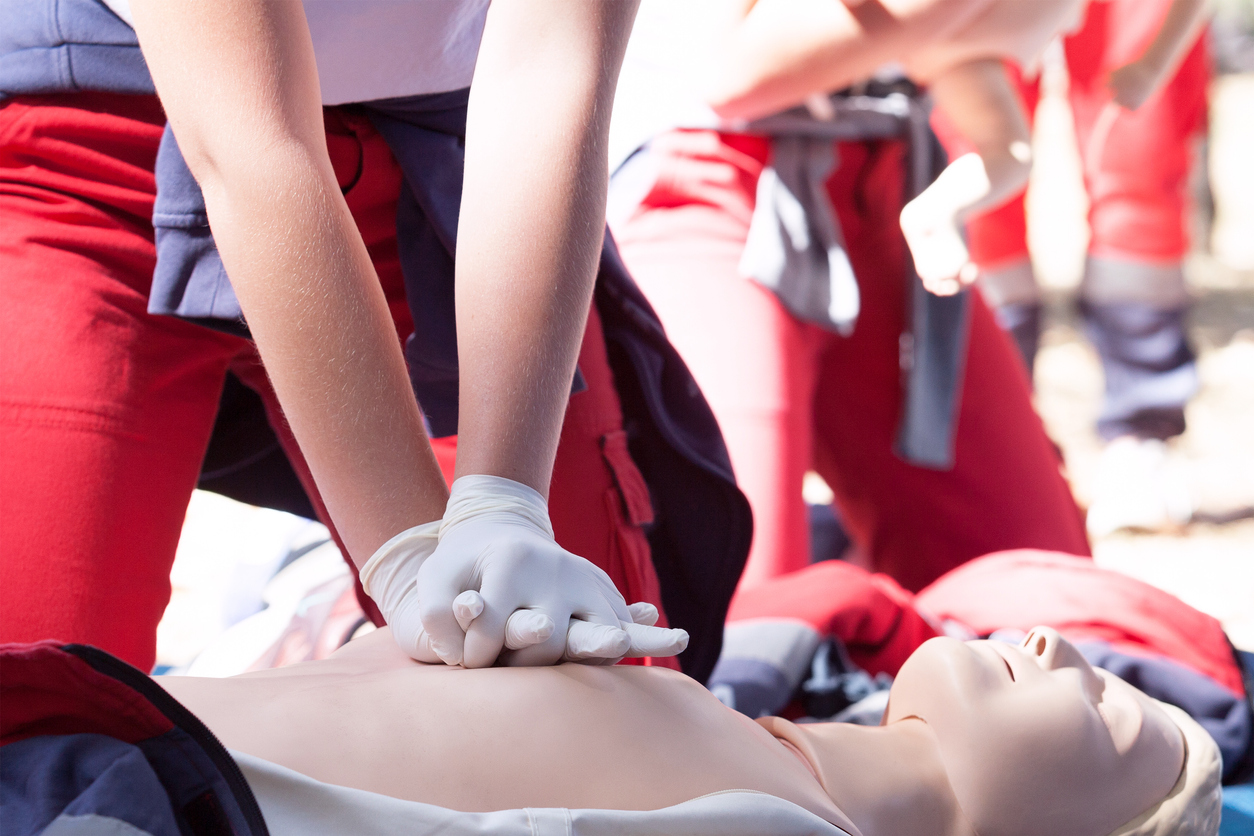
First on the Scene Training (FOTS) is a course for EMS Certified educators to train bystanders on how to respond when an emergency happens. FOTS does not replace the need for EMS personnel or other first responders; rather, it instructs lay people on the appropriate steps to take to help someone until first responders can reach the scene. By engaging in this training, people can help save lives.
A lay person trained in FOTS may be referred to as a lay rescuer.(1) A lay rescuer is a person not professionally trained to provide a higher level of medical care to a person who has suffered an injury or sudden illness. First responders, including EMS and paramedics, on the other hand, are educated professionals who are certified to provide trauma and medical care in emergencies.
Although much focus is on sudden cardiac arrest, people also suffer other types of emergencies that need immediate attention. Cuts and burns, overdose, traumatic injury due to a fall or automobile accident, or exposure to an allergen, for instance, should be tended to while first responders are on their way to the scene.
People who take FOTS classes will learn how to:
- Activate the 911 system
- Perform hands-only CPR and AED
- Administer naloxone (brand name Narcan®)
- Administer epinephrine
- Respond to life-threatening bleeding
- Treat penetrating chest trauma
- Move an injured person safely
- Position an injured person
The first person on the scene is usually someone AT the scene – a coworker, parent, babysitter or sibling, even a stranger who saw what happened. With the proper knowledge, a lay rescuer can effect a more positive outcome for an injured party. Studies show that when a bystander steps in to administer aid, victims have a higher survival rate.
- In one study, when bystander CPR was administered to cardiac arrest victims, 22.9% survived until admitted to the hospital, and 11.9% were discharged alive.(2) Compare that to rates of victims who received no bystander aid: 14.6% and 4.7%, respectively.
- In meta-analysis of studies on the administration of naloxone, an opioid reversal agent, “naloxone administration by bystanders was associated with a significantly increased odds of recovery compared with no naloxone administration.”(3)
- Epinephrine is the only effective treatment for anaphylaxis due to allergic reaction. Learning to administer it, usually in the form of an injectable pen syringe, is vital to stopping a reaction to allergen exposure, such as a bee sting or accidental ingestion of tree nuts.
- Trauma is a leading cause of death for Americans, with unintentional injury being the leading cause in people ages 1 to 44. Learning how to stop excessive bleeding, pack a wound, and use a tourniquet can prevent the approximately 35 percent of hemorrhage deaths prior to a victim getting to a hospital.(4)
The National Association of Emergency Medical Technicians (NAEMT) developed FOTS with the International Association of Fire Chiefs (IAFC). FOTS training provides instructors with a toolkit to teach the general public basic emergency response to life-threatening emergencies until EMS arrives on the scene. For more information about becoming an instructor in FOTS training, see the NAEMT.org site.
- “Why Lay Rescuers are Important,” First Response Training International.
- Ritter, G., Wolfe, R.A., et al. “The effect of bystander CPR on survival of out-of-hospital cardiac arrest victims.” American Heart Journal.
- Giglio, R., Li, G., and Dimaggio, C. “Effectiveness of bystander naloxone administration and overdose education programs: A metaanalysis.” Research Gate.
- Birnbaum, M. “Why you should teach bleeding control for bystanders.” (This is sponsored content at ems1.com.)







